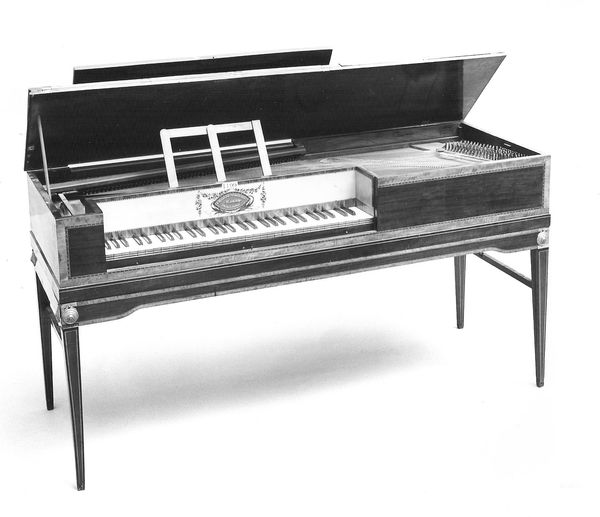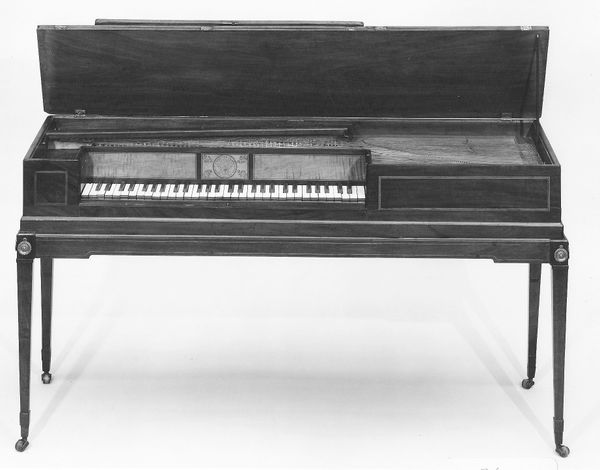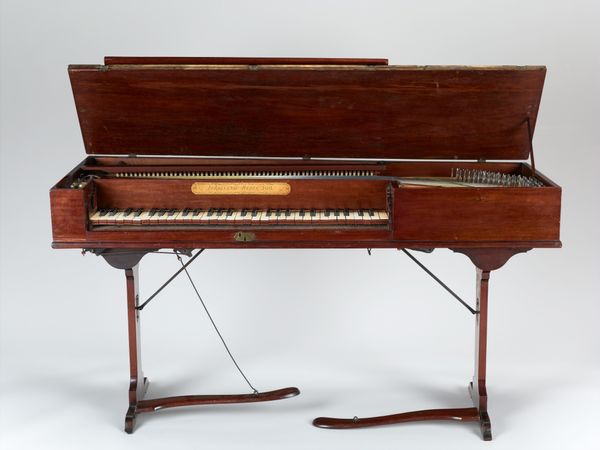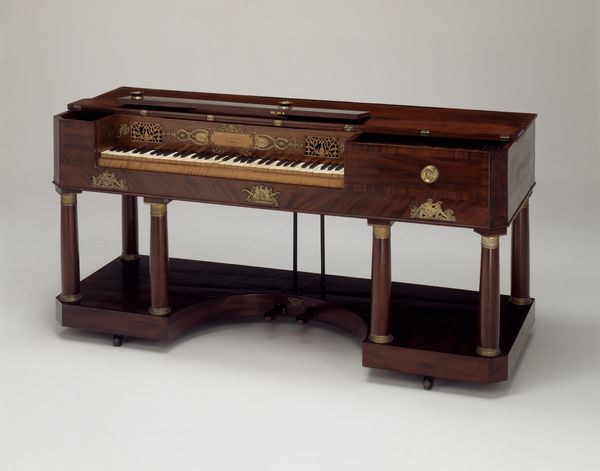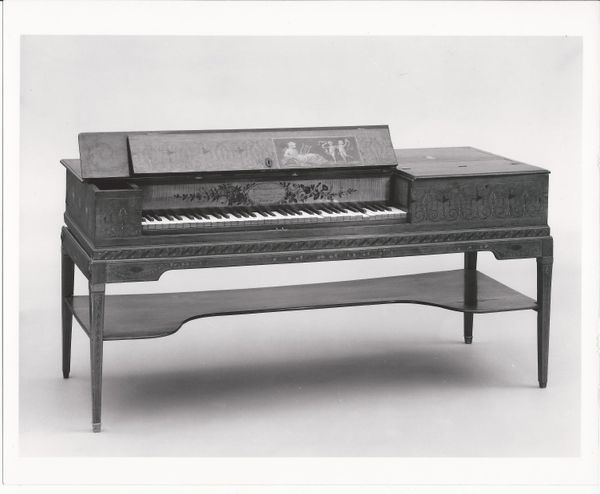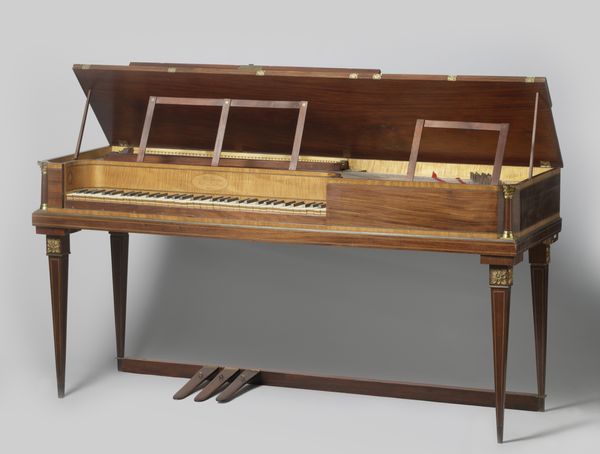
photography, wood
#
sculpture
#
photography
#
wood
#
musical-instrument
Dimensions: Case L. (perpendicular to keyboard): 55.8 cm (22 in.); Case W. (parallel to keyboard): 156.2 cm (61-1/2 in.); H. (including legs) 83.3 cm (32-7/8 in.); D. (without legs or lid): 21.5 cm (8-1/2 in.): 3-octave span: 48.4 cm (19-1/8 in.); Vibrating string L. - longest: 136.6.cm (53-7/8 in., shortest: 11 cm (1/16 in.); c2: 31.5 cm (12-1/2 in.) Case H w/o legs: 24cm Stand: H. 61 cm; (w and d same as piano)
Copyright: Public Domain
This square piano was crafted by George Astor around the late 18th century. Note the roses painted onto the front panel of the instrument. Roses, symbols of love and beauty since ancient times, carried significant weight in the 18th century. Observe how roses appear in classical Roman frescoes, emblems of Venus, or Aphrodite, goddess of love. In the Renaissance, Botticelli’s "Birth of Venus" sees roses falling around her as she emerges from the sea, a symbol of divine beauty. Over time, they began appearing in different contexts, from royal emblems of dynasties to memento mori motifs in funerary art. These visual echoes resonate through history, each rose building upon layers of symbolism and emotional depth. Consider the rose's thorns, hinting at pain intertwined with beauty, a subtle reminder of life's transient nature. Such imagery affects us on a primal level, tapping into a collective memory of life, love, and loss. The rose motif is part of an ongoing visual narrative, resurfacing and evolving in ways that continue to captivate and stir the human spirit.
Comments
No comments
Be the first to comment and join the conversation on the ultimate creative platform.

